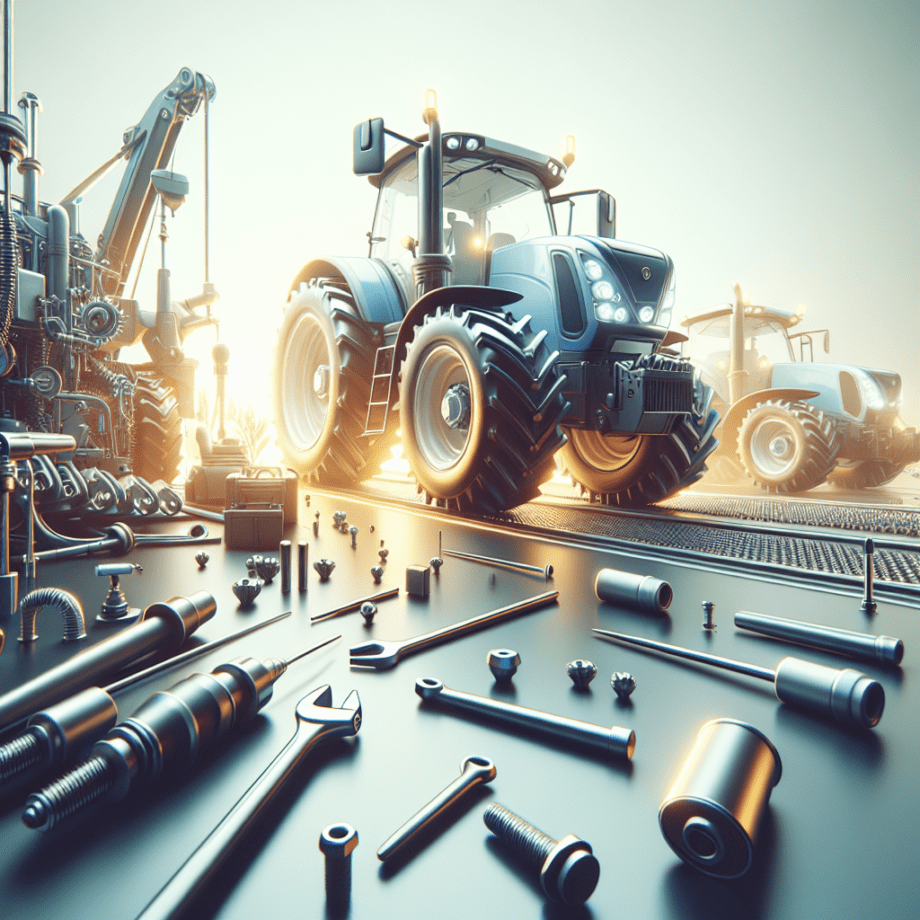Maintaining and servicing agricultural machinery is crucial for ensuring optimal performance and longevity. Proper care not only extends the life of the equipment but also enhances productivity and reduces the risk of unexpected breakdowns. This article will delve into the essential practices for maintaining and servicing your agricultural machinery, covering both routine maintenance and more in-depth servicing procedures.
Routine Maintenance
Routine maintenance is the cornerstone of keeping agricultural machinery in top condition. Regular checks and minor adjustments can prevent major issues down the line. Here are some key aspects of routine maintenance:
Daily Inspections
Daily inspections are vital for identifying potential problems before they escalate. Operators should perform a visual check of the machinery before and after use. This includes looking for signs of wear and tear, leaks, and loose or missing parts. Key areas to inspect include:
- Fluid Levels: Check engine oil, hydraulic fluid, coolant, and fuel levels. Top up as necessary to ensure the machinery operates smoothly.
- Tire Condition: Inspect tires for proper inflation, wear, and damage. Properly inflated and well-maintained tires improve fuel efficiency and reduce the risk of accidents.
- Belts and Hoses: Examine belts and hoses for cracks, fraying, or other signs of wear. Replace any damaged components to prevent breakdowns.
- Electrical Systems: Ensure that all lights, indicators, and electrical connections are functioning correctly. Faulty electrical systems can lead to operational issues and safety hazards.
Lubrication
Lubrication is essential for reducing friction and wear on moving parts. Regularly lubricate all grease points, bearings, and other components as specified in the machinery’s manual. Using the correct type of lubricant is crucial, as different parts may require different lubricants. Over-lubrication can be just as harmful as under-lubrication, so follow the manufacturer’s recommendations closely.
Cleaning
Keeping agricultural machinery clean is not just about aesthetics; it also helps prevent the buildup of dirt and debris that can cause mechanical issues. After each use, clean the machinery thoroughly, paying special attention to:
- Air Filters: Clean or replace air filters regularly to ensure the engine receives clean air, which is vital for efficient combustion.
- Radiators and Coolers: Remove any debris from radiators and coolers to prevent overheating.
- Exterior Surfaces: Wash the exterior to remove mud, dust, and other contaminants that can cause corrosion and damage.
In-Depth Servicing
While routine maintenance is essential, in-depth servicing is equally important for addressing more complex issues and ensuring the machinery operates at peak performance. In-depth servicing typically involves more detailed inspections and repairs, often requiring specialized tools and expertise.
Engine Maintenance
The engine is the heart of any agricultural machine, and keeping it in good condition is paramount. In-depth engine maintenance includes:
- Oil Changes: Regular oil changes are crucial for maintaining engine health. Follow the manufacturer’s guidelines for oil change intervals and use the recommended oil type.
- Fuel System Maintenance: Inspect and clean the fuel system, including fuel filters, injectors, and pumps. Replace any worn or damaged components to ensure efficient fuel delivery.
- Cooling System: Check the cooling system for leaks, blockages, and proper coolant levels. Flush and replace the coolant as needed to prevent overheating.
Hydraulic System Maintenance
Hydraulic systems are integral to the operation of many agricultural machines. Proper maintenance of the hydraulic system includes:
- Fluid Checks: Regularly check hydraulic fluid levels and top up as necessary. Use the correct type of hydraulic fluid as specified by the manufacturer.
- Filter Replacement: Replace hydraulic filters according to the manufacturer’s schedule to ensure clean fluid circulation.
- Leak Inspections: Inspect hydraulic lines, hoses, and connections for leaks. Address any leaks promptly to prevent system failure.
Transmission and Drivetrain Maintenance
The transmission and drivetrain are critical for the movement and operation of agricultural machinery. Key maintenance tasks include:
- Fluid Changes: Regularly change transmission and differential fluids to ensure smooth operation and prevent wear.
- Clutch and Gear Inspections: Inspect clutches, gears, and other drivetrain components for wear and damage. Replace any worn parts to maintain efficient power transfer.
- Alignment Checks: Ensure that all drivetrain components are properly aligned to prevent undue stress and wear.
Seasonal Maintenance
Seasonal maintenance is essential for preparing agricultural machinery for different operating conditions throughout the year. This includes both pre-season and post-season checks and adjustments.
Pre-Season Maintenance
Before the start of a new season, perform a thorough inspection and servicing of the machinery to ensure it is ready for the demands ahead. Key tasks include:
- Comprehensive Inspection: Conduct a detailed inspection of all machinery components, including the engine, transmission, hydraulic system, and electrical systems.
- Preventive Repairs: Address any issues identified during the inspection, even if they seem minor. Preventive repairs can save time and money in the long run.
- Calibration and Adjustments: Calibrate and adjust machinery settings to match the specific requirements of the upcoming season’s tasks.
Post-Season Maintenance
After the season ends, it’s important to prepare the machinery for storage or the next season. Post-season maintenance includes:
- Cleaning and Lubrication: Thoroughly clean the machinery and apply lubrication to all moving parts to prevent rust and corrosion during storage.
- Storage Preparation: Follow the manufacturer’s guidelines for preparing the machinery for storage, including draining fluids, disconnecting batteries, and covering the equipment.
- Documentation: Keep detailed records of all maintenance and repairs performed. This documentation can be invaluable for future reference and resale value.
Conclusion
Maintaining and servicing agricultural machinery is a multifaceted task that requires diligence, attention to detail, and adherence to manufacturer guidelines. By performing routine maintenance, in-depth servicing, and seasonal checks, operators can ensure their machinery remains in optimal condition, leading to increased productivity, reduced downtime, and extended equipment life. Investing time and effort into proper maintenance practices is a wise decision that pays off in the long run, both in terms of operational efficiency and cost savings.
